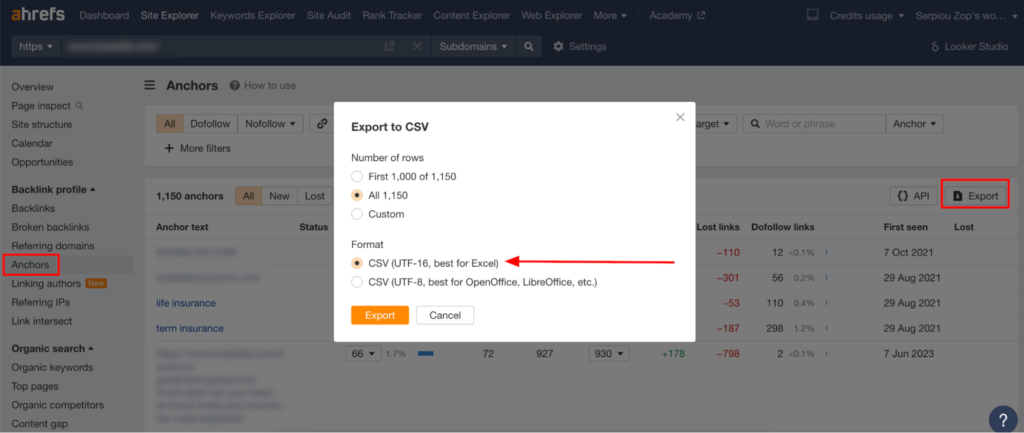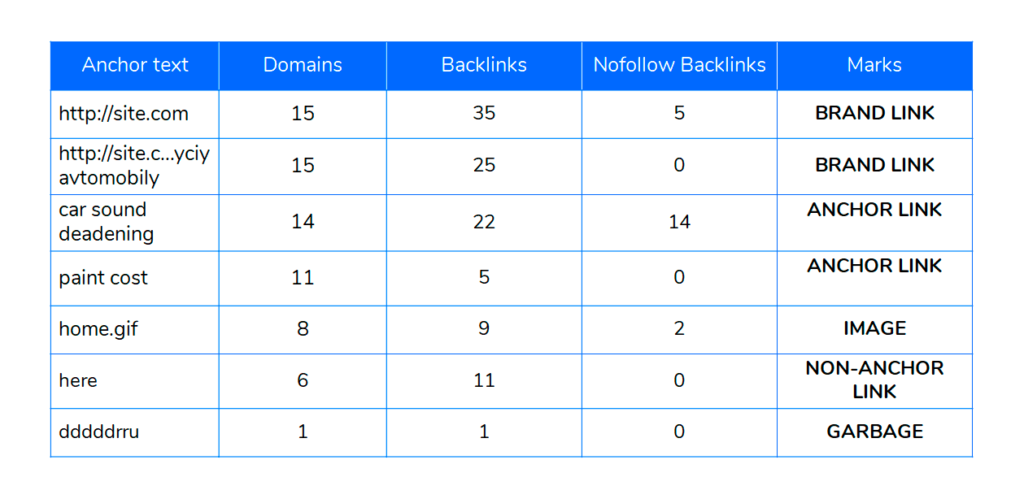An anchor list is a compilation of words and phrases that make up the textual part of a link. Creating such a list is a crucial part of the link-building strategy because search engines pay attention to the word form “embedded” in the URL. Links are divided into anchor and non-anchor links.
An anchor link mentions keywords, commercial, or informational queries: “buy,” “price,” etc. Non-anchor links are divided into several subtypes:
- Brand links – with the name of the company or product in the anchor (e.g., “Ahrefs”, “Ahrefs.com”).
- With general phrases in the anchor: “Read more”, “Here”, “This”, “Details”.
- Direct URL without text: https://ahrefs.com/.
- Image links.
Anchors provide more weight in ranking than simple URLs. Google algorithms know this well. Overly precise or, conversely, strange anchors like “pizza margarita Delhi buy” may alert search engines. And if a site has many anchor links beneficial to the SEO-specialist (which can be easily determined by the anchor list), problems may arise.
Enter the “Anchors” section and export the data to Excel.

Do this for each competitor’s site. Compile the information into a single table. Then categorize each link by its type. You can separately highlight images and garbage (nonsense in the URL).

After all links are collected, calculate the proportions in the table. This will give you an approximate share for each type.

This approach isn’t a panacea that will guarantee you a top position, but it clearly demonstrates the main trends to follow. If such a ratio works for more successful sites, it should work for you too.
Based on the final table, you can create a plan for increasing the site’s link mass, including an anchor list with various types of links. Then you can start implementing it by placing incoming links on the relevant sites. Some of them might be obtained for free (e.g., in various thematic directories), and others can be purchased using proven link services, such as Serpzilla.
Don’t forget to continuously monitor the effectiveness of link building. If your chosen strategy is correct, try slightly changing the ratio of link types at your discretion, keeping the original plan as the main guideline.

Thus, we’ve put together the last piece – now we have all the data for work. And if everything is done correctly, you should have a plan for increasing the site’s link mass, which includes:
- The total number of links and donor sites.
- Breakdown by pages.
- Anchor list with types of links.
- The dynamics with which we will grow.
With this table, you can start searching for and placing links. Even with this simple analysis, we get an approximate idea of the links that we can later:
- Obtain for free using directories, profiles, presentations (so-called submits);
- Buy or rent in articles or forums. With this list, you can already approach a link-building service (like Serpzilla), set up the purchase of links according to the specified parameters, and achieve a rise in positions.



